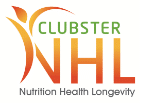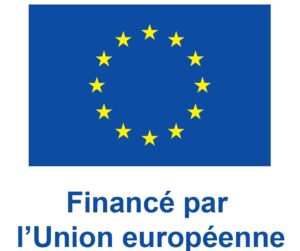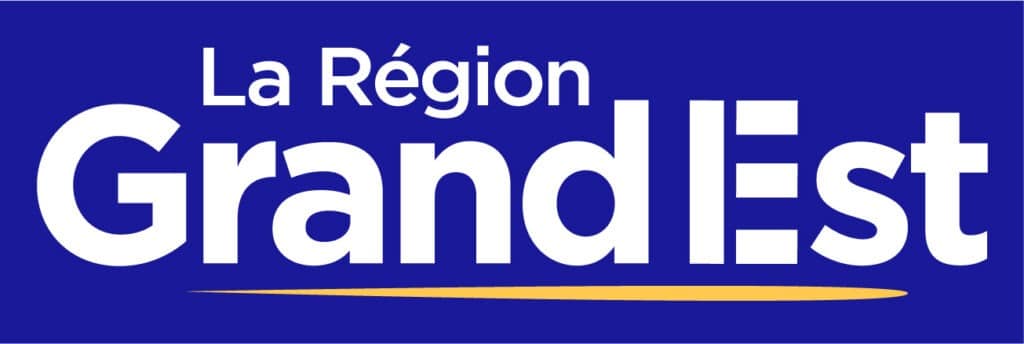December 3rd & 4th, 2024
IN-PERSON | LILLE, FR
December 11th& 12th 2024
ONLINE MEETINGS
Dec 3rd & 4th, 2024
IN-PERSON | LILLE, FR
Dec 11th& 12th, 2024
ONLINE MEETINGS
Field Survey about prevalence of avian helminths in several regions of France
Helminths, prevalence and poultry
Project topic: prophylaxis strategies
Description: Set up a convenient day-today lab method to diagnose avian helminths
Collect field samples in poultry farms with a free-range access (broilers, layers) in differents regions, to assess prevalence of main helminth species
Analyze the data collected and edit a synthesis report
Avantages of the innovation: The method allows a quick lab analysis to identify helminths on the field, to target the right treatment.
Potentiel market application: Optimization of the use of anthelmintics to the real field conditions (in order to target the treatment molecule and dose vs parasites really encountered). Follow up of the parasitic pressure on the field and monitor the emergence of anthelmintic resistance.
Project development stage: Stage 3 : Method has been set up, tested by some vet labs. Field samples are now being collected. We need some more budget to extend the number of farms investigated to get data at a national scale.
Novel Diagnostic Test for Improvement of Udder Health and Bovine Mastitis Control (SpecCNS)
Improving bovine mastitis diagnosis and control
Project topic: Bovine mastitis; dairycows; udderpathogens; milkquality; multiplex realtimePCR
Description: Mastitis remains the most common and costly disease in dairy cows worldwide requiring antibiotic treatment. Bovine Coagulase-negative staphylococci (CNS) have recently emerged as common bovine udder pathogens with a within-herd prevalencesranging from 10 to 60% . While 52 species and 28 subspecies are described, CNS are routinely only diagnosed on group level. It is well documented different CNS have different species-specific characteristics and can be classified into udder-adapted, opportunistic and environmental CNS or as virulent, protective against other udder pathogens and of no importance. A feasible and accurate CNS species-specific quantitative PCR is vital to discriminate harmless from harmful CNS, enable prudent treatment decisions and give necessary new insight into the impact and epidemiology of CNS infections. Integration of the new test in veterinary udder health management will become the basis to develop CNS specific control programs. Concerns about antimicrobial resistance and prudent use of antibiotics promote the implementation of selective dry cow treatment instead of treating all cows regardless of infectious status. Knowing CNS species specific pathogenicity factors and implementing this knowledge in diagnosis e.g. on samples at dry off, will reduce unnecessary dry cow treatments. There is no currently available diagnostic tool, which can isolate, identify and differentiate CNS on species level directly without pre-culture step. The hypothesis is that species-specific knowledge of the impact and epidemiology of CNS infections based on a fast and accurate multiplex quantitative PCR method (qPCR) can improve udder health management through efficient treatment, preventive strategies and reduction of antibiotic usage. The objectives are 1) to develop and validate a qPCR assay for detection of CNSspecies directly from milk samples without prior culturing and without the need for extra costs to cover the sampling equipment and storage, 2) evaluate the novel qPCR assay for identifying the most relevant pathogenicity factors of CNS species, 3) apply the qPCR assay in commercial herds to identify the epidemiological species-specific patterns from subclinical and clinical infections and to classify CNS species into “friendly = protective” and “non-friendly = harmful” for better decision making, and 4) evaluate the impact of implementing the qPCR assay in routine veterinary practice on udder health, antibiotic usage and milk quality.
Avantages of the innovation: The greatest effect of this proposal is developing a novel diagnostics that results in a better, quick, accurate and more targeted health advice to the dairy farmers and veterinarians so that fewer antibiotics and especially fewer broad-spectrum antibiotics are used. It is expected the antibiotic consumption to be lowered due to improved health and critical choice of animals for treatment based on evidence obtained in the project concerning. This ensures a high level of wellbeing in the cows and a targeted preventive effort is promoted with the new knowledge in the health advice. The proposed research project is an extension to my robust experience and qualifications in udder health and mastitis diagnostics, where I have identified and characterized the contagious and environmental mastitis pathogens using a wide variety of laboratory and potential biomarkers for bovine mastitis. The project will translate my experience and research into an innovative technology that can be used for improving mastitis control and also demonstrate its value in the dairy industry. There is no currently available diagnostic tool, which can isolate, identify and differentiate CNS on species level directly without pre-culture step. Thus, there is a necessity to develop, validate and apply a quick, accurate and species-specific PCR assay, which does not require a pre-culture step. Species differences in virulence characteristics could be the reason for difference in clinical expression between CNS species. Knowing CNS species specific pathogenicity factors and implementing this knowledge in diagnosis is vital e.g. testing at dry off will reduce unnecessary dry cow treatments. This is in line with the increasing international pressure by UN and FAO to reduce the use of antimicrobials in food production to minimize the emergence of antimicrobial resistance. Derived effects for society include less use of antibiotics in milk production, less risk of antibiotic resistance and less risk of
antibiotic residues in the milk. In connection with the reduction of the number of infected cows and the decrease in the tank cell number, an improved
milk quality is expected due to less secretion of bacteria in milk.
Potentiel market application: Optimization of the use of anthelmintics to the real field conditions (in order to target the treatment molecule and dose vs parasites really encountered). Follow up of the parasitic pressure on the field and monitor the emergence of anthelmintic resistance.
Project development stage: The new multiplex qPCR test will provide benefits to the dairy industry in terms of milk quality and yield as well as to the cattle in terms of animal welfare. Additionally, there will be public health benefits resulting from reduced antimicrobial use. The project generates a multi-page output that forms the basis for commercialization. It is expected that the industrial partner to increase earnings by developing and selling new diagnostic Q-PCR kits. These are kits for use in the diagnosis of mastitis in cows and for the detection of mastitis bacterium in teat niches and in the stable environment. If the project succeeds in combining species detection for CNS and virulence and resistance genes, they will as the first qPCR methods in the world combines knowledge of causal agents with knowledge of antibiotic resistance. It is expected that the we develop two new qPCR diagnostic packages aimed at mastitis for better CNS identification and differentiating CNS subtypes and the other one for combined pathogenicity and resistance kit.
HALOMYC: Use of halophytes as a source of protective substances against mycotoxin-contaminated fodder
Halophytes, mycotoxins
Project topic: Prophylaxis strategies, therapeutic area, natural mycotoxin bio-inactivation
Description: Due to their harmful environment, halophytic plants have evolved a wide range of secondary metabolites with numerous biological activities. Among them, antioxidant properties have been largely reported. Here, halophytes have been tested in vitro for their protective action on animal cells contaminated with mycotoxins (DON, ZEA, T2).
Avantages of the innovation: There is no natural anti-mycotoxin agent hitherto. A preliminary in vitro screening of halophytic plants showed 2 efficient species against animal cells. Halophytes can be grown in greenhouse or in open field under agronomically conditions to produce high biomass.
Potentiel market application: Feed ingredient for livestock (cows, pigs) or herbivor pets.
Project development stage: Stage 2: POC in vitro.
Vaccine against congenital neosporosis in ruminants
Congenital neosporosis- mucosa-nanoparticle vaccine
Project topic: Prophylaxis strategies
Description: Development of a nanoparticulate vaccine containing all soluble antigens of N. caninum administered by mucosal route to mimic the natural way of infection and to induce protective immune responses.
Avantages of the innovation:
– No current treatment or vaccine => fulfil the high need
– Subunit vaccine => no risk of infection/reversion
– All antigens encapsulated => “synthetic parasite”
– Non-invasive injection => no pain, easy to do
– Mucosal administration => local and systemic specific immune response
Potentiel market application: All producers of meat/milk from ruminants worldwide. The estimate for the N. caninum-related losses based on data from ten countries exceeds US $1.3 billion annually.
Synergistic interaction of Antibiotics and Bacteriocins produced by lactic acid bacteria
Bacteriocins, synergistic antimicrobials, One Health
Project topic: Therapeutic area
Description: The main objective of this project is to explore the potential role of bacteriocins (antimicrobial peptides produced by bacteria) isolated from wild animals as an adjuvant therapy to improve antibiotic effect. The method comprises lactic acid bacteria isolation, bacteriocins purification and characterization of their potential role as antibacterial agents in synergy with conventional antimicrobials used in Animal Health.
Avantages of the innovation: Preservation of the effectiveness of existing antimicrobials meeting a One Health approach to address the resistance issue by enhancing the antibacterial effect of antimicrobials and therefore reducing their usage.
Potentiel market application: Healthcare sector companies, veterinarians, stockbreeders, personnel related to animal health.
Project development stage: Stage 2: POC in vitro.
Inhibitory action of extracellular self DNA in the control of harmful organisms
DNA Self toxicity, Extracellular DNA (exDNA)
Project topic: Prophylaxis strategies, Therapeutic area, Medical device, Digital health…
Description: We proved that randomly fragmented extracellular DNA of an organism is inhibitory to its own self. This discovery has led to an innovative approach to combating harmful organisms. Different tests done with heterologous DNA, and self DNA revealed that the action is highly species specific. While the self DNA is inhibitory, heterologous DNA acts as a source of nutrient. Patent : WO2014020624A2
Avantages of the innovation: The effect of extracellular self DNA opens new perspectives for a highly species specific inhibitory product for biological control, with significant economic and environmental advantages. Notably, the species specific action makes the invention important in combating specific organisms affecting animal health, with least side effects. The technology can be used in different life science domain too, as a panacea to fighting organisms.
Potentiel market application: Animal gut health products to fight diseases like coccidiosis and neosporosis has been a concentration of companies for decades. Only in India, 95% of poultry loss is attributed to coccidiosis. Further, an estimated $90 million is spent in the US, and over $3 billion spent worldwide, for coccidiosis prevention annually. Because of the development of anticoccidial resistance to current drugs and vaccines, and potentially harmful effects on human health, there is a need for safe alternatives. Forbye, organisms affecting companion animals, are also of interest to facilitate the current Veterinary care. This technology brings hope in both prophylaxis strategies and therapeutics for diseases caused by organisms for animal care.
Project development stage: Stage 2: POC in vitro.
ACT ON BACT Original antibiotic compounds
Antibiotic, Bacterial resistance, Gram +
Project topic: New classes of antibacterial agents
Description: ACT ON BACT offers two classes of synthetic compounds with novel structures characterized by original mechanisms of action that limit the rapid acquisition of resistance by bacteria.
Avantages of the innovation:
– Strong activity towards multi-resistant Staphylococci and Enterococci (Gram+)
– Not active on commensal flora
– Original mechanisms of action
– Efficient and fast syntheses
– Low costs
– Non-toxic in vivo
Potentiel market application:
– Applications pharmaceutiques / vétérinaires : applications en traitement systémique (structures et modes d’action originaux) ;
– Application Topique (sélectivité antibactérienne singulière) ;
– Produits phytosanitaires
Project development stage: 10 hits have been tested:
– MIC from 2 to 0.125 mg/L
– bacteriostatic or bactericidal properties
– spontaneous mutation rate 10-7 to 10-9 => low resistance
– in vivo systemic tests on 2 mouse models: non-toxic but effectiveness to be reviewed probably because of plasma protein capture (work in progress on improving bioavailability or towards topical use)
Eco-friendly flexible biofuel cell for low-power disposable devices
Sustainable, Energy, Ecological, Disposable
Project topic: Low-power devices Sensors
Description: A sustainable and eco-friendly biofuel cell offering low-power (mWh) energy generation for disposable devices. This new approach allows the replacement of batteries or conventional fuel cells in existing applications, whilst minimising impact to the environment. It also opens up new opportunities for low-power ultra-thin (and flexible) health / transportation monitoring and IoT / connected applications.
Avantages of the innovation:
– Sustainable, bio-sourced materials and fuels
– Environmentally friendly / non-toxic
– Ultra-thin, flexible energy source
– Adaptability to devices (performances, shapes and sizes, voltage specifications)
– Metal-free energy source
– Possible roll-to-roll manufacture process
Potentiel market application: With such a flexible, light, and thin device, we envisage a new generation of wearable sensors/devices that provide increased comfort, mobility, and discretion.
Project development stage: We have developed a paper-based, ultra-thin and portable biofuel cell system that uses biological catalysts instead of chemical or expensive noble metal catalysts to convert natural substrates such as glucose and oxygen into electricity. The technology can be easily customised to meet different shape and power requirements.
Our devices exploit enzymes, carbon electrodes and paper microfluidics, all of which provide a sustainable and environmentally-friendly method of generating energy. A power density of around 1 mWh.cm-2 is achieved, and the device is initialised with less than 100 µL of liquid (tap water, urine, blood).
Our technology can power low-power sensors / devices and can then be easily disposed of, without fear of polluting the environment as they are made from bio-sourced materials.
Next-generation antivirals
Therapeutic development, broadspectrum antivirals, host-targeting agent
Project topic: Therapeutic development of a nextgeneration antivirals with broadspectrum activity and high barrier of resistance
Description: Our project focuses on the development of next-generation antivirals with broad-spectrum activity and a high barrier of viral resistance. Our strategy is to design host-targeting agent which counteracts viral hijacking of cellular proteins required for viral life cycle. Our invention is applicable for viruses of interest to veterinary and human medicine. We have already identified a LEAD compound that has been able potently reduce in vitro viral load of several unrelated animal viruses including, Porcine Reproductive and Respiratory Syndrome virus (PRRSV) , Bovine Respiratory Syncytial Virus (BRSV), Swine Influenza Virus (SIV), SIV and Feline Infectious Peritonitis Virus (FIPV).Our LEAD compound is characterized by a broad spectrum activity, a high reduction of viral load, a high barrier of resistance and low cytotoxicity.
Avantages of the innovation:
• Only one drug to treat and control various viral dissemination within animal livestock
• High barrier of viral resistance
• Potential applications in human Health
Potentiel market application:
• Companion animals market, in particular for treatment or prevention of feline infectious peritonitis (worldwilde distribution, around 1% of cats affected, systematically fatal disease)
• Animal livestok market, treatment of bovine respiratory syndrom, BRSV is the major respiratory pathogen, leading to production losses (reduction in milk yield, loss of 250 gr average day gain of calves, higly prevalent worldwilde)
Project development stage: stage 2 : POC in vitro
– We have rationally designed a family of small molecules with a broad-spectrum antiviral activity.
– We identified a lead compound and have already obtained in vitro proof of concept of broad spectrum antiviral activity on several human and animal viruses.
EquiSym: connected tool for the equine vet
Horse, Locomotion, Lameness, Biomechanics
Project topic: Quantification of lameness medical device digital health
Description: Biomechanical sensors (accelerometers, gyro, GPS) attached to the wither, the croup and the canon, connected to a dedicated app for the quantification of lameness in the horse. Innovations in the field of biomechanics, vet diagnostic and follow-up of treatments, big data and deep learning with the setting up of new algorythms.
Avantages of the innovation: Early diagnostic; Quantification of the effects of diagnostic analgesia and treatments; Follow-up of horses during rehabilitation process
Potentiel market application: New medical device that can be used by the vet (and prescribed to the riders) in order to quantify locomotor asymetries, enhance vet diagnostic, training and rehabilitation of lame horses
Project development stage: POC in vivo : system already developped and used in a clinical setting; Algorythms validated with the comparison to a gold standard kinematics method (MoCap); Developpement of the app on the go.
CLOSTRICOX
Clostridium perfringens, clostridium botulinum, experimental model, chickens, feed.
Project topic: Experimental model, alternative for antibiotics treatments
Description: First objective is to build experimentals models of infection by Clostridium perfringens or Clostridium botulinum in chickens using coccidiosis infection, second target is to test preventive solutions in experimental infection trials.
Avantages of the innovation: No model of experimental infection is available in France and the possible solutions are tested in the animals feed to be used in routine then.
Potentiel market application: C. Perfringens and C. botulinum are serious illnesses with significant economic losses, so the possibility of testing is of great interest to professionals in the broiler chicken industry.
Project development stage: stage 4 : candidates produced at medium scale

With more than 1,000 international actors from 35+ countries, such as big pharma, emerging and small biotech, diagnostic companies, pre-seed / seed / Series A investors, as well as professionals from tech transfer, academia and research institutions, BioFIT is the leading partnering event in Europe for technology transfer, academia-industry collaborations and early-stage innovation deals in the field of Life Sciences. BioFIT is also the European marketplace for pre-seed, seed and Series A investment rounds in Life Sciences.
Learn more
Organised by:



WITH THE SUPPORT OF:
INSTITUTIONAL PARTNERS:









"*" indicates required fields
Lille Grand Palais
1, Boulevard des Cités Unies
59777 Lille, FRANCE
This site is protected by reCAPTCHA and the Google Privacy Policy and Terms of Service apply.
WARNING: Some fraudulent companies are supposedly providing the attendees list of BioFIT. And some are passing themselves off as being BioFIT organisation members and asking you to pay. Please note that the BioFIT team will never sell you the BioFIT attendees list and never ask for your bank account details to make you pay for hotel bookings, exhibition fees or others, and certainly not over the phone.Please be extremely vigilant.